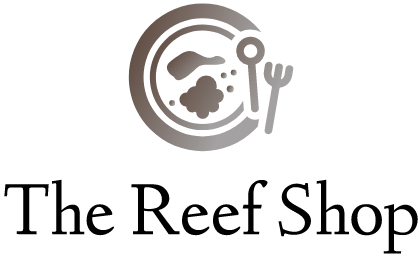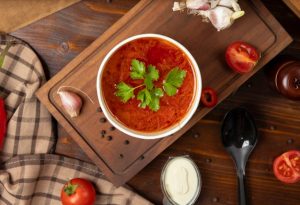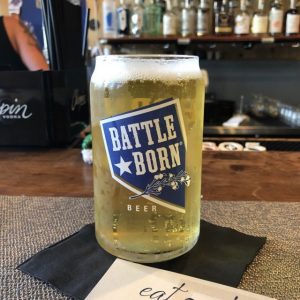
There are two aspects of labels that impact breweries: initial, designing a brand that attracts consumers; the second, accommodating state and federal labelling necessities while not distracting from the intent of a label, that being, selling beer. Additionally, to support the branding, the most vital task of a label is to induce the patron to desire they recognize and trust the whole and, by extension-the brewage.
For a label to be influential, it should perform three vital functions: stigmatization, promoting and selling. ‘Branding‘ is how the general public perceives the still and its product. ‘Marketing’ is how a still gets the brand/product message into the marketplace, making the ‘trial’ and repeat patrons. ‘Selling’ is regarding articulating a craft beer’s attribute story. Typically individuals don’t seem to be alert to a subliminal want to undertake a new brewery, how a label creates the epiphany; some would possibly decide it an impulse purchase.
The label could be a complete package: it tells the story of company values, it comes to those values through a product label to a target demographic, and it brings reality to the consumer regarding a product’s attributes (beer vogue, taste, and quality, etc.). Even while not visiting a craft beer taproom or brewhouse, individuals have kind opinions of a brewery from however a label charms them.
Getting labels on any alcoholic beverage is not evaded by the government; native, State, and Federal. For myriad reasons, individual States, the TTB, and even the FDA have rules stipulating specific data that has got to seem (and conversely, should not appear) on a Craft beer label. Alcohol content, ingredients, supportive ingredients like fruit, and beer vogue can stipulate what governmental body gets involved in a title on the far side of the TTB.
Here is an example of the complexity of brewage labelling. I have operational data of what ‘Lite” means and haven’t explored carb counts or fibre content in a very “lite” beer. However, laws/regulations need detailed data regarding biological process values in ‘Lite’ beer and not in regular beer. Thus, the FDA is an element of the “Lite” designation and “Average Analysis” statement regarding nutritional values that permit the “Lite” designation. Go figure.
I feel most shoppers MEasure} like me, {they do|They are a unit doing} not paying a lot of attention to brewage labels; food labels are a completely completely different subject. Label size and legally prescribed content make a label precious property to assist the whole and sell a craft brew. Consumers do not despair. Choices do exist to seek out the fun stuff regarding the production of your favourite beer; it’s referred to as QR codes. A lot of that later. Labelling laws do not solely apply to electronic messaging; they also dictate font, different colours, size of the font, daring versus not bolding, location, etc.
Reading a label on aluminium will be a task that results in annoyance: lightweight reflective from a shiny will, tiny print, the colour of font against a background colour, the image, and attempting to seek out the ABV data (which might not even be there). Perhaps at your next get-together, somebody is powerless to understand the fibre or protein content before they consume the food.
Relative to ‘law and labeling,’ the EU regulatory body for beer has mandated brewage labels containing ingredient and “energy” values (nutritional analysis) of the product. “The Commission basically says that alcoholic beverages ought to suits identical labelling necessities as different food product and, therefore, they ought to indicate on their labels and ingredients list and a nutrition declaration,” reports the house Helen Keller and Heckman LLP
Here could be a statement why nutritional data, as on a package of sausage, ought to apply to beer within the EU additionally. “We hope that by providing a lot of data a minimum of offers individuals a selection. We have a tendency to praise the brewers as a result of the knowledge on the label. Having off-label ingredients and calories, online, is simply not adequate,” Mariann Skar, secretary-general of Eurocare. I say, in the U.S., if you would like to understand a lot of a few beers chemistry than a person will comprehend in the span of an atom’s half-life, attend Google; it’s free. A label hasn’t enough area to show food chemistry 101.
This is observed as a result of ingredient lists, and dietary share values (Average Analysis Statement) are currently terribly distinguished on food packaging within the U.S.; ingredient lists and values might apply to beer additionally. However, now is real-time for the craft brewing business to appear at QR codes, Barcodes, and NFC (Near Field Communication) as an off-packaging/label thanks to being prior to any restrictive modification. it should have already started.
As noted higher than. to feature confusion on this subject, the Light/Lite/Low Cal brewage class will have ingredient list demand not relevant to regular beer. With larger the FDA has some authority. Even the ABV listing on a brewage instrumentality could or might not be shown in sure states like New York State. Adam move writes in VinePair, “Some states could need the breweries in their states to list ABV, however that’s up to the states.” ethical of the story, if you’re searching for the ABV in your brewage it depends on State laws if it’s allowed or needed on the label.
Lauren Steele writes in men’s Journal, “An initiative to encourage awareness among brewage drinkers of what is in their bottle or will, the biggest brewage firms within the country (including Anheuser-Busch, HeinekenUSA, and MillerCoors) can begin printing nutrition data on their brewage labels. Within the new tips planned by the brewage Institute, labels can list calories, carbohydrates, protein, and fat aboard alcohol by volume. Labels will embody ingredient revelation.”
It ought to be noted that the wine business has been listening to shopper awareness of the alcohol content. There are some trends showing shopper aversion to high ABV in food alcohol products. So far, the TTB accepts that brewage ingredients are barley, water, yeast and hops are acceptable ingredients while not listing them on the label.
As an aside, testing for ingredients and biological process values may be high-ticket. Some craft brewers supply an array of brew designs, and acting tests for nutritional values for tiny batch beers or seasonal beers might be price preventive, to not mention little amount label runs.
Because I still cannot place a brewage {in a|during a|in an exceedingly|in a very} instrumentality with an approved label, I have spent a great deal of area addressing the topic of obtaining a designation agreed. However, the continuing task is commercialism to the patron.
The real purpose of labels from a consumer’s perspective is branding, promoting, and selling brew. Brewage brands vie for shelf area whereas at the same time competing for the eye of shoppers, and labels having robust creative designs can drive success. Strong artistic labels should tell a visible story and have a demographically targeted copy; each should be among the constraints of colour, design, fonts, and graphics (per TTB regulations), says World Vision. Remember, an image is priced at 1000 words.
Craft brewage includes a distinctive set of artistic considerations inherent in coming up with a label. Finally, it’s regarding the beer shopper. Pre-Pandemic, they will be outlined as having upmarket incomes, higher levels of education, a tendency to explore products and a growing base of ladies shoppers. The trick is obtaining face time with these shoppers.
Peruse the shelves at Total Wine & a lot of or BevMo and decide for yourself the creativeness behind the label. “Craft brewers are very entrepreneurial, which connotes those that area unit artistic and innovative. a lot of their creativeness is in their product, which naturally spills over into labels, packaging, logos, and naming conventions.
There is some science to coming up with a mistreatment style to create a whole, produce a market and sell products. However, the general public developing craft beer label styles can tell you, “There are not any set rules to follow once making product labels. There area unit robust suggestions”, says Mark Trumper of the artistic professional.
Ultimately, the patron decides on how well the brewage label communicates the whole, promoting and sales message. Before a label is placed on the will or bottle, displayed on a coaster, shown on the ginmill electronic beer board, there ought to have already been a great deal of concerns given to the label.
We have mentioned, perhaps an excessive amount of, the final demand of labels, however, the precise legal necessities are addressed a lot later. The new brew to be offered by the still in a very ginmill, native retail outlet, eating house or brewpub should complement (not compete) with the whole image of them still. For instance, the label on the brewery ought to promote the tenants of what consumers assume the management/company is regarding.
The label can then ought to be targeted at a selected client demographic. If the patron isn’t at home with the still and has no experience with the whole, the label should be enticing enough to command the shelf area.
Issues of labels are absolute regarding the patron whether or not or not it’s legal or style. Covid-19 has fostered some major changes in the craft brewage market. and people’s changes can keep it up for the foreseeable future. within the March 2021 issue of Packaging World, Anne Marie Mohan reports some changes that already area unit being felt:
People appear to be experimenting a lot with alcoholic beverages, with twenty third of shoppers attempting new-to-them beverages.
Consumers are selecting what is perceived as “healthier” choices (including ingredients).
Thirty-three per cent of shoppers try new beers.
The beer looks to be obtaining a bigger share of the increasing potable market via “trials” of latest brands/products. Logically, craft wholesalers appear to be willing to change with trials. which will embody ginmill exploration, off-premises, brewery events, pairing experiments (as Stone production has done a great deal of labor with), etc.
The following area unit fingernail explanations of TTB label necessities. The TTB (Tax and Trade Bureau) reviews quiet one hundred,000 alcoholic labels yearly additionally to creating field visits to breweries/distilleries/wineries to make sure approved labels adjust to production standards. The rules for labelling malt beverages are quite one,000 pages and explains the exceptions. These exceptions involve different Federal Agencies like the FDA, States, and different countries.
No matter the instrumentality your malt food comes in, breweries are a unit needed to possess the prescribed TTB content on the label. Cans, bottles, crowlers (32 oz.) and kegs, have identical content necessities. For the sake of brevity, the main target is twelve oz. will of domestic brewage with no additives or deviation in grain outside of barley.
The complexity of navigating through the TTB and FDA to induce a COLA (Certificate of Label Approval) issued therefore a still will begin packaging their brewage, could be an intimidating task and would possibly need some outside help. If all the “t’s” are crossed and “I’s” dotted the approval method would take four days, however I don’t figure it.
There are several problems which will dictate style price, like stigmatisation, state laws, distribution, packaging, formulation, filling forms, etc. From a printing perspective a replacement, yet simple, label will price regarding $350/2,000. Shrink Wrap labels, foils, style complexness, shapes, etc. can add considerably to printing value.
THE LABEL
A quick read of what’s needed.
Requirements outlined
Brand Name-
The name is presumably the name of the corporation and can be the foremost distinction.
Placement-Front
Font Size-Depends on the scale of the instrumentality; however should be clear with different backgrounds (probably an emblem or branding image).
Class Designation-
Classes of malt drinkable are such titles as brew, lager, stout, etc.
Placement: should seem on the front of the instrumentality, parallel to the bottom of the instrumentality.
Font Size: Minimum two millimetres tall for containers bigger than eight FL. oz. (A nickel is two millimetres thick.)
Legibility: should be clean and not a part of different content
Name and Address-
The name and address of the producer/bottler or packer should seem on the label. It gets additional difficult once mistreatment of shared facilities or employing a contract brewer.
Placement: Front, back or facet of instrumentality.
Font Size: Minimum two millimetre tall for containers bigger than eight FL. oz.
Legibility: clean and on a contrastive background.
Net Contents-
Contents should be shown in customary U.S. measurements. If desired, also can be shown in metric measures additionally to the U.S.
Placement: to look on the front of the instrumentality during a traditional reading position.
Type Size: Minimum two millimetre tall for containers bigger than eight FL. oz.
Legibility: clean on a contrastive background, and not a part of different content.
Must be expressed in yank live, additionally it however may additionally be expressed in metric live, e.g., “1 PINT (473 mL)” is appropriate. A
In 16 oz. and bigger containers, volume can not be shown during an “ounce”. Example: 1 PINT, 4 FL. OZ.
Alcohol Content-
The amount of alcohol contained during a exceedingly|in a very} malt drinkable is a possibility by TTB standards. However, within the case of “ALC/VOL” statements States do have the ultimate say. Some states dictate that NO “ALC/VOL” is to be shown once ordered by State-not ABV.
Placement: Take your decision, front, back, or side.
Type Size: Minimum two mm tall for containers bigger than eight FL. Oz.
Legibility: All fonts of the “alcohol content statement” should be constant font and font size, and color as range.
Health Warning Statement-
This is AN absolute demand for any malt drinkable sold within the U.S. that contains quite zero.5% alcohol (Near Beer). No area to chop corners here. And ditch mistreatment of your MS Word to evaluate sizes of letters. The TTB uses characters per in. because the customary measuring.
Placement: Front, back or facet of label.
Type Size: Minimum two millimetres tall for containers bigger than eight FL. oz. and a minimum three millimetre for containers over one hundred FL. oz. (As a reminder a gallon is 128 oz.
Legibility: should be clean, showing on a contrastive background. Most typically it is often shown during a border vogue box.
The words “GOVERNMENT WARNING” should seem in capital letters and in daring font.
The statement content should NOT seem in daring font.
It is acceptable for the complete statement to be all told in capital letters font.
The statement should seem as a continual paragraph.
May not be condensed too tightly; in particular it ought to ne’er exceed the utmost range of characters per in.
Optional info that may be added-
Country of Origin
Lite/Light/Low Cal.-Here is wherever the authority gets concerned. The label should embrace an announcement of Average Analysis that is for such things as fats, calories and serving size.
*Disclosure of any of the subsequent ingredients isn’t elective, they have to be shown FD&C Yellow #5, sulfites, Aspartame, and sweetener.
As mentioned earlier, the EU has mandated that nutritionary info be enclosed on the label. Launched by the brew Institute in 2016, the Voluntary revealing Initiative asks brewers to voluntarily embrace a serving facts statement and freshness geological dating on their product yet as disclose ingredients on either the label or secondary packaging via an inventory of ingredients, a respect to a web site with the data, or through a QR code. I’m a giant fan of QR codes to give elaborated disapproval and artistic info regarding the distillery, events and initiatives, all QR codes are unit accessible via a telephone.
Some things fall under the class of “nice to know”. Craft brew labels area unit therein class however still does not rise to the amount of say-nuclear waste disposal. For homebrewers and customers labels became advanced and can in all probability continue therein direction. Perhaps sometimes it’ll be vital to grasp the “fiber” content during a nonchalantly consumed brew, however it does not appear to impact the typical client these days. The additional individuals fathom the trials of obtaining a malt drinkable to promote, it simply adds to the expertise.
Read our blog on Direct Fire Brew Kettle – The Pros and Cons






